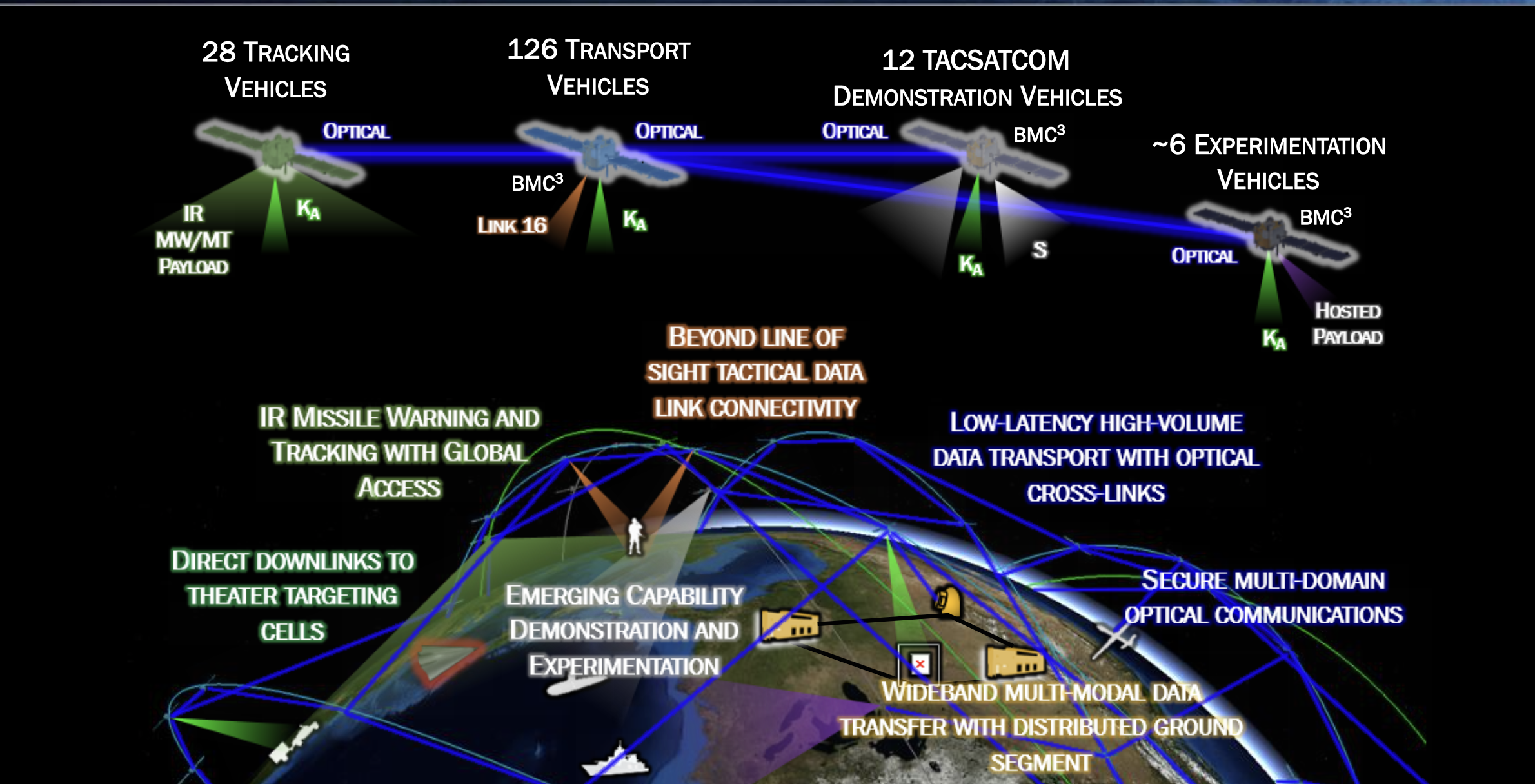General Dynamics’ partners in this contract include Iridium, KSAT and Raytheon
WASHINGTON — General Dynamics Mission Systems won a $324.5 million contract to operate the ground systems and manage network operations of the Space Development Agency’s low Earth orbit constellation, the agency announced May 26.
The seven-year contract is for $162.9 million, with $161.5 million in options to establish the ground operations and integration (O&I) segment for SDA’s Tranche 1 constellation, a mesh network projected to have as many as 166 communications, data-relay and sensor satellites to support military users around the world.
The base contract runs from May 2022 until January 2025, and options would extend the contract until September 2029.
The O&I contract is “cost plus,” a type of contract used by the Pentagon for the development of new technologies where the contractor is paid for all project’s expenses plus an additional fee.
SDA procures its satellites under fixed-price contracts but decided the O&I agreement with General Dynamics should be cost-plus, an SDA official told reporters. There is a risk that, because of its complexity, the cost of the project could exceed the original estimates and the government should absorb “a certain amount of risk” the official said.
General Dynamics for this bid teamed with Iridium Communications. Other partners include KSAT and Raytheon.
The scope of the contract is broad, including network management and constellation monitoring across ground space, and user segments.
The O&I contractor will stand up two operations centers located at government facilities in Grand Forks Air Force Base, North Dakota, and Redstone Arsenal in Huntsville, Alabama. Additionally it will have to develop 14 new ground stations, or data entry points: eight Ka-band, two S-band and four with optical communications.
Three satellite manufacturers selected so far for Tranche 1 — Lockheed Martin, Northrop Grumman and York Space Systems — will operate their own spacecraft using their own ground stations but the O&I contractor will coordinate data traffic and manage the command and control of the mission payloads such as the inter-satellite crosslinks and the on-orbit data processors. Tranche 1 satellites are projected to launch in 2024.
Two more satellite suppliers are expected to be selected for Tranche 1 of the Tracking Layer of missile-detecting satellites, which would launch in 2025.
The O&I contractor will have to figure out a common ground architecture to integrate satellites from all seven vendors. This is a complex task, the SDA official said, and “carries the highest risk.” The success of Tranche 1, said the official, depends on successful integration.
SDA received seven proposals for the O&I contract, the official said.
Collin Lee, director of Frontiers – a space technology incubator for General Dynamics Mission Systems — said in a statement ot SpaceNews that the company’s team brings a “long heritage of mission-critical space and ground communications and networking expertise to the Space Development Agency.”
“Iridium, General Dynamics Mission Systems and the U.S. government have a long and successful history of working together and partnering on this project is a natural evolution of our relationship,” said Matt Desch, CEO of Iridium. “Iridium’s 25 years of experience operating in LEO makes us uniquely qualified for this opportunity.”
